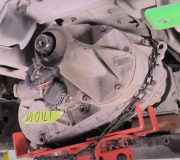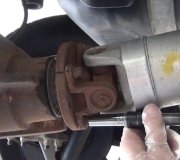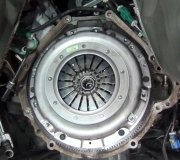HI there,
The radiator will have to be cleaned by a radiator repairer as it may be partly blocked with deposits, you will still have flow but the cooling capacity may be well down, The radiator cap is a pressure cap, it will allow the system to build up a given amount of pressure and maintain it, this is because when a fluid(your coolant) is under pressure the boiling point is raised, so the system can run at the normal range of temp and there is a safe margin for warmer conditions, an explnation.
Pressure cap and reserve tank
As coolant gets hot, it expands. Since the cooling system is sealed, this expansion causes an increase in pressure in the cooling system, which is normal and part of the design. When coolant is under pressure, the temperature where the liquid begins to boil is considerably higher. This pressure, coupled with the higher boiling point of ethylene glycol, allows the coolant to safely reach temperatures in excess of 250 degrees.
The radiator pressure cap is a simple device that will maintain pressure in the cooling system up to a certain point. If the pressure builds up higher than the set pressure point, there is a spring loaded valve, calibrated to the correct Pounds per Square Inch (psi), to release the pressure.
When the cooling system pressure reaches the point where the cap needs to release this excess pressure, a small amount of coolant is bled off. It could happen during stop and go traffic on an extremely hot day, or if the cooling system is malfunctioning. If it does release pressure under these conditions, there is a system in place to capture the released coolant and store it in a plastic tank that is usually not pressurized. Since there is now less coolant in the system, as the engine cools down a partial vacuum is formed. The radiator cap on these closed systems has a secondary valve to allow the vacuum in the cooling system to draw the coolant back into the radiator from the reserve tank (like pulling the plunger back on a hypodermic needle) There are usually markings on the side of the plastic tank marked Full-Cold, and Full Hot. When the engine is at normal operating temperature, the coolant in the translucent reserve tank should be up to the Full-Hot line. After the engine has been sitting for several hours and is cold to the touch, the coolant should be at the Full-Cold line
Tuesday, July 14th, 2009 AT 7:29 PM




